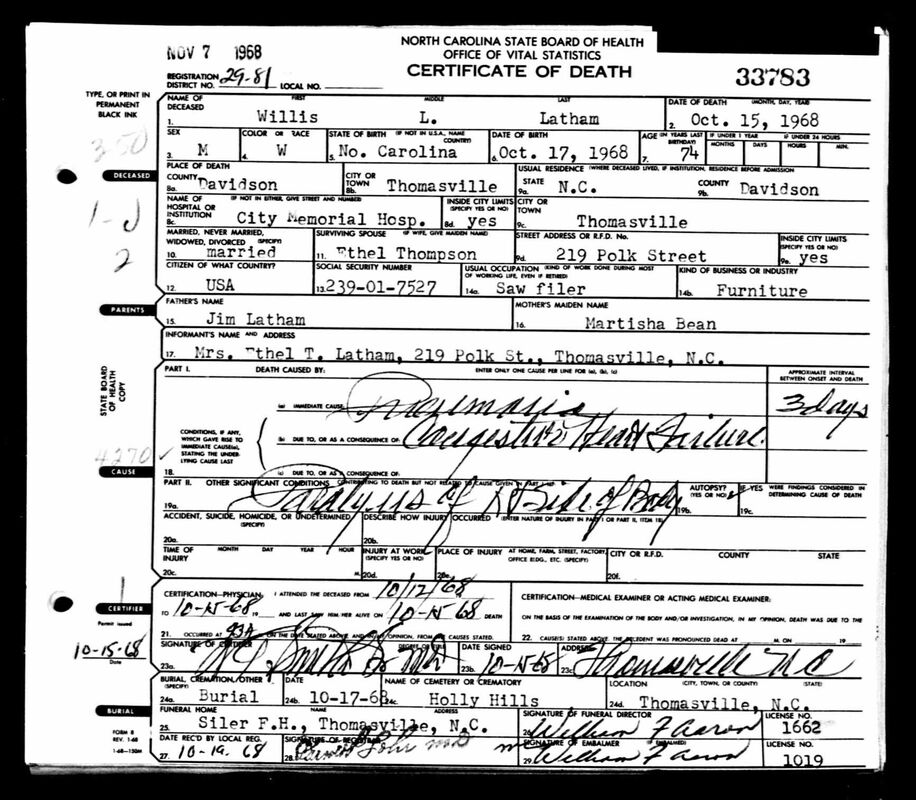And so should you.
|
I'm writing a family history for a client with deep roots in North Carolina, and came upon an interesting record the other day. My client's great-aunt, Ethel Thompson married Willis Latham in 1913 in Anson County, North Carolina. "North Carolina Marriage Records, 1741-2011," Ancestry > Anson > Marriage Licenses (1870-1961) > image 5856 of 11533, Anson County North Carolina, marriage record for Willis Latham & Ethel Thompson (1913). For this family history, I needed to provide the dates of birth and death for Willis Latham. The 1900 census told me that he was born in April 1894, and the North Carolina Death Index on Ancestry stated his date of death as 15 October 1968 in Davidson County, NC. Ancestry provided no hints for Willis Latham pointing to his 1968 death certificate, and none of the other family trees containing him had his death certificate. Where was it, and why wasn't it showing up? I used the browse feature in the database, heading for Davidson County, then 1968, then October. As I expected it to be, Willis Latham's death certificate was there. Once I saw it, it was obvious to me why Ancestry's computer-generated hints didn't catch it. His date of death was correct, all right: 15 October 1968. But his date of birth was two days later, on 17 October 1968. Obviously someone typed in the date of burial in the wrong box. "North Carolina, Death certificates, 1909-1976," Ancestry > Davidson > 1968 > October > image 29 of 54, death certificate 33783 for Willis Latham (1968). I should state right here that I NEVER accept Ancestry's hints without checking them first. I've seen hints for christenings in London, England in 1795 when the person of interest was born in Nebraska in 1911. And if there are records that should be on the hint list, and aren't, I go looking for them.
And so should you.
0 Comments
Your comment will be posted after it is approved.
Leave a Reply. |
Archives
October 2023
Categories
All
All content (c) Claudia Breland, 2022
|




 RSS Feed
RSS Feed